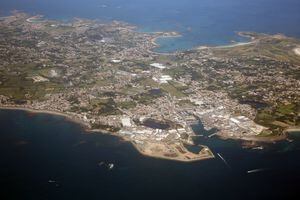New planning vision could improve everyone’s lives
THIS is a call for the States to get radical, to get ambitious, and to step in and do something that could make the lives of thousands of islanders – maybe all islanders – better.

It is time to take advantage of the prevailing depressed development market conditions, and the powers and levers available to the States, and drive through a new planning vision for the heart of the Vale and St Sampson’s – and one that is not all about cramming in rabbit hutch homes in tiny fields to meet a need few seem to agree is actually there in an area of the island that is simply choking on concrete already.
The opportunity is there, if the willingness is from both sides, for the public and private sector to work together on projects that would do so much more for the island than weeds growing out of piles of aggregate and tumbledown buildings at Leale’s Yard and the Saltpans.
The two sites together are a unique opportunity on a massive piece of land in an otherwise built-up area.
The Co-op’s plans for Leale’s Yard have fallen through, again, while the once envisaged ‘data park’ in the Saltpans has come to nothing for too long.
Open space has a value as, to an extent, do the urban habitats that are springing up in these places, but not as much as a large community-focused mixed development could.
With public money involved it could move beyond the understandable developers’ needs to make profit and be able to have more of a social impact.
The States is sitting on millions in bond money and having made the decision to go down the borrowing route should use it in a way that would not only help boost the economy, but develop facilities and an environment that the island could be proud of.
It is hard, beyond a major reclamation project, to ever see this type of opportunity presenting itself again.
Perhaps it would be about well-designed, affordable housing with good use of the space to create parkland.
Maybe small-scale industrial uses, maybe some new sporting facilities – a stadium, a 50m pool, a velodrome.
Perhaps roads that could not only provide relief to other areas but be designed with a focus on pedestrians and cyclists.
A site for a University of Guernsey perhaps, or the rebirth of some horticulture for a new cannabis or hemp growing industry.
How’s about cafes, an art gallery, a purpose-built museum? A cinema? The revitalisation of the Bridge?
Perhaps some of the land offers an opportunity for larger scale renewables development.
What is guaranteed is that if anything is to happen in the short-term it cannot be left to the private sector alone.
The economic reality is all too apparent.
Of course, this is all so far out of the comfort zone of the political and public sector in Guernsey it would never happen.
And that is a shame because a holistic vision could make so much better use of this land than what is happening now.
It could be a perfect marriage with the community too if they were allowed to have an input in driving through what should – and shouldn’t – be built.
Instead we will remain stuck like we are now, in planning’s version of Waiting for Godot.
These are sites that have become a symbol for an economic malaise, when they could be something for a vibrant and confident island to be proud of.
Our planning vision is already too narrow and unsophisticated.
It is why instead of creating new pedestrian and cycling routes through the fields that link so much of the island, vulnerable road users are left in conflict with the traffic.
You could plot routes east to west, north to south and create safe options, but instead the answer has been a blunt imposition of a 25mph limit, a limit which does nothing to solve, say, the reasons why parents won’t let their children walk to Capelles School.
Perhaps this Assembly will surprise us all with the development vision for the harbours – we are told it is right up there in terms of the priorities.
But then politicians have been talking about a vision for the eastern seaboard ever since the ‘Little Venice’ proposals were released for Belle Greve Bay.
Talk and consultation in this case have been cheap, getting things beyond that stage has clearly been much more difficult.
For all the beauty of St Peter Port, it is a travesty that the seafront is in many ways a giant free car park, that al fresco eating requires essentially sitting in traffic and that whether cruise ship passengers get ashore or not depends on the weather.
We have a choice to make about whether we preside over the slow erosion and decline of what makes Guernsey such a special place to live, or take action to reverse that and make it even better.





